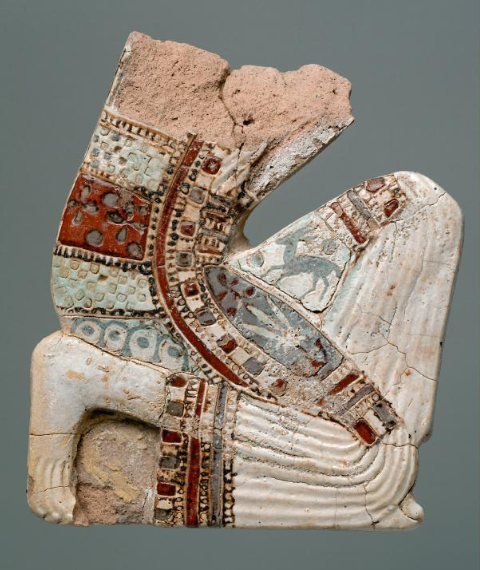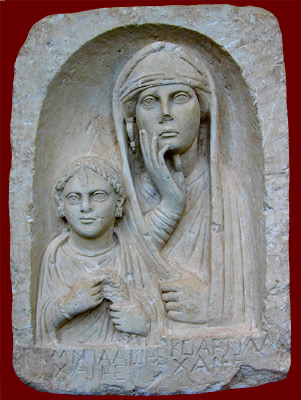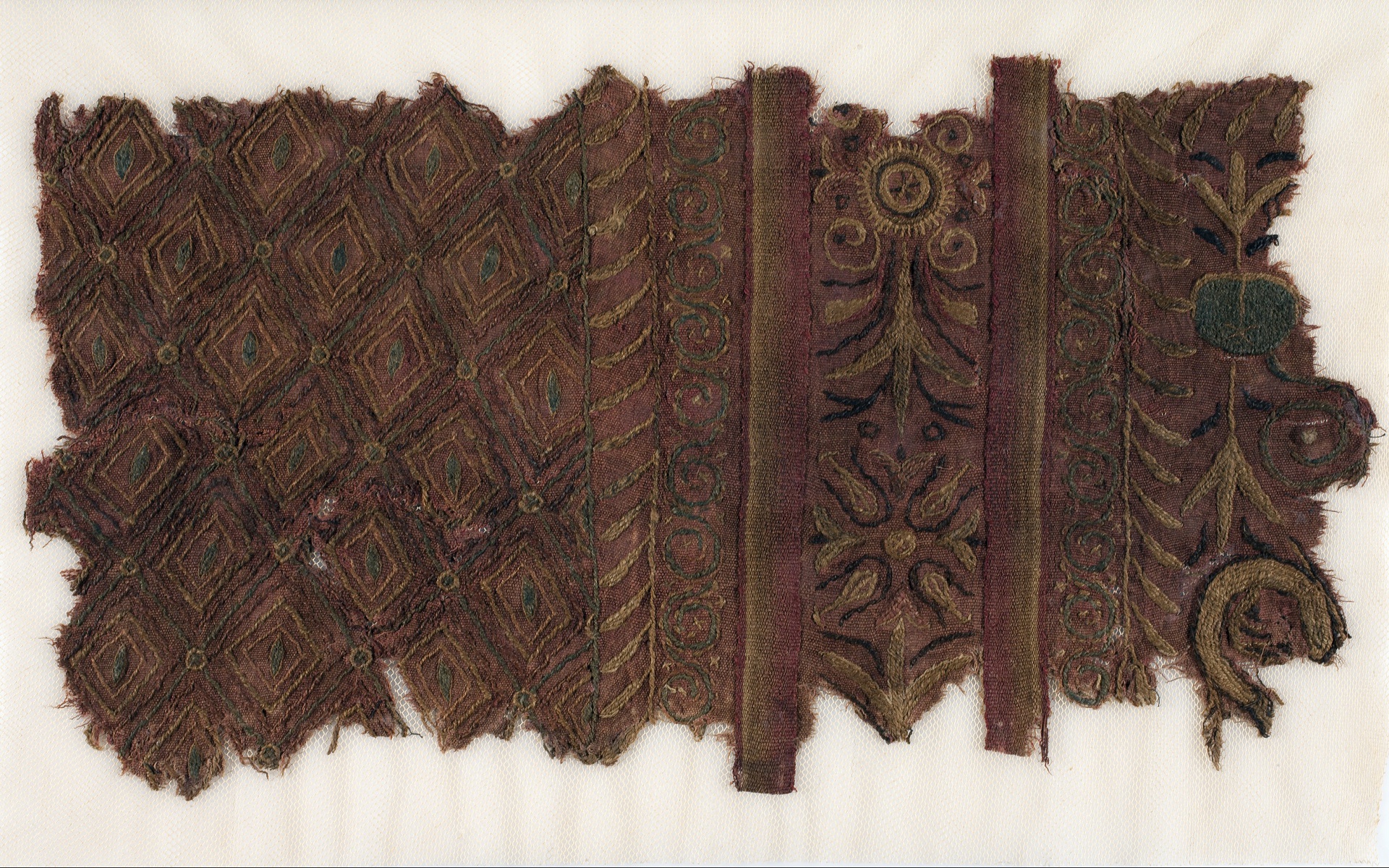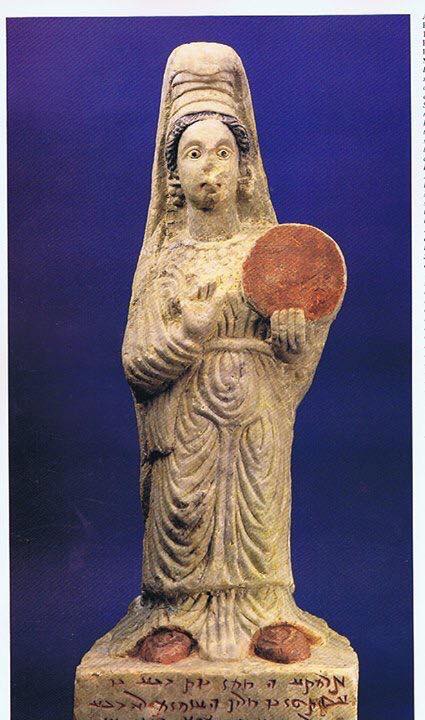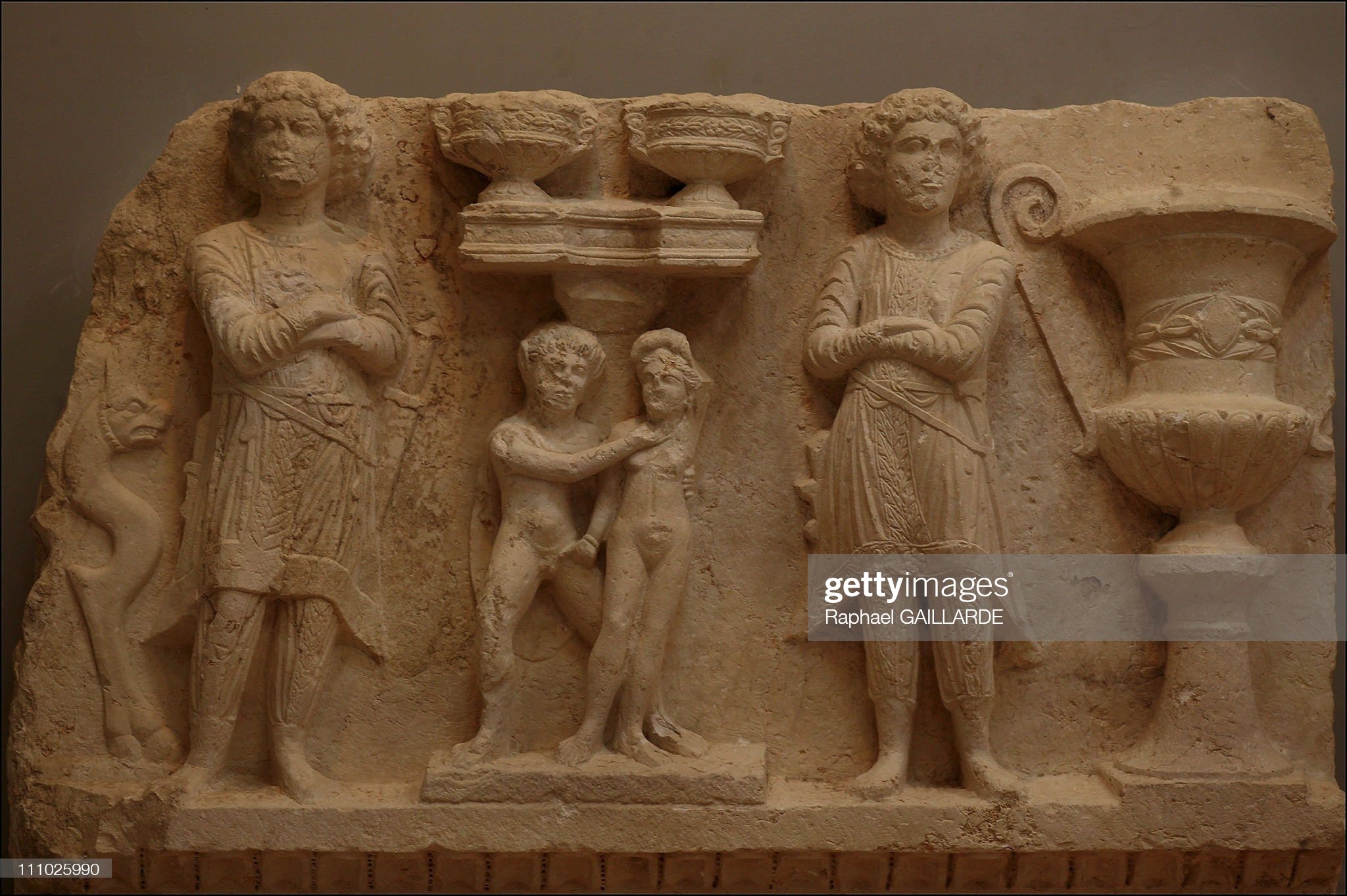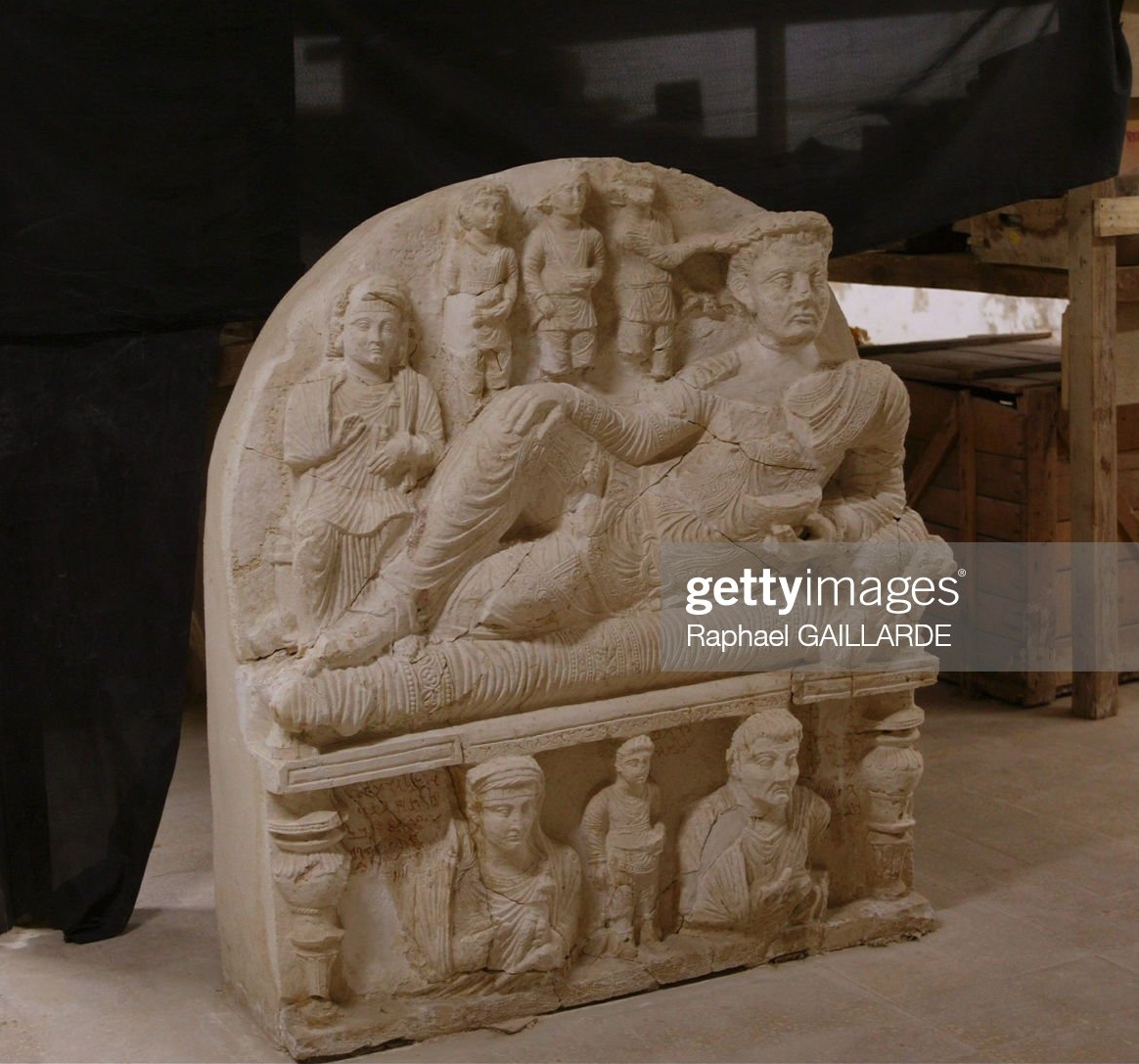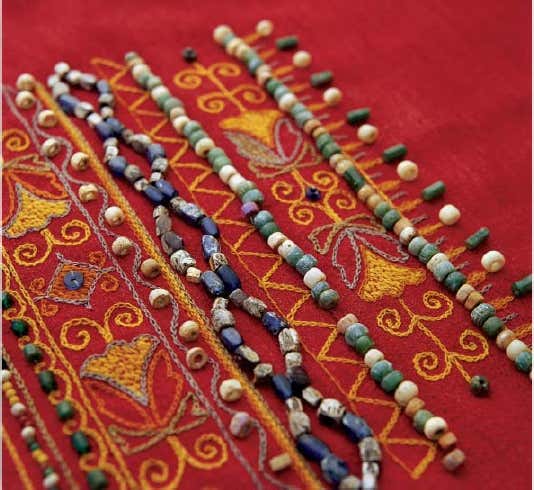- Clothing of the Iranian peoples, an article with sources >> Encyclopaedia Iranica Online
- Women’s Robes: The Achaemenid Era BERNARD GOLDMAN
In: Bulletin of the Asia Institute New Series, Vol. 5 (1991), pp. 83-103 https://www.jstor.org

Woman or goddess in Persian costume, 4th C BCE, Egypt
For more pictures and information read >> Woman in Persian costume
Literature:
Women’s Robes: The Achaemenid Era BERNARD GOLDMAN
In: Bulletin of the Asia Institute New Series, Vol. 5 (1991), pp. 83-103 https://www.jstor.org/stable/24048288

Cyprus Museum 1968/V-30/684
H. 0.65 m.
A limestone figure wearing the κάνδυς from Cyprus Antigoni Zournatzi https://www.academia.edu
Cultural interconnections in the Achaemenid West: a few reflections on the testimony of the Cypriot archaeological record Antigoni Zournatzi https://www.academia.edu
 Women’s Robes: The Achaemenid Era BERNARD GOLDMAN In: Bulletin of the Asia Institute New Series, Vol. 5 (1991), pp. 83-103 https://www.jstor.org/stable/24048288 |  Women’s Robes: The Achaemenid Era BERNARD GOLDMAN In: Bulletin of the Asia Institute New Series, Vol. 5 (1991), pp. 83-103 https://www.jstor.org/stable/24048288 |
 Silver statuette of a bearded man, from the Oxus treasure. The Achaemenid period 5th-4th C BCE British Museum Inv. no. 123901 |  Gold figure of a seated man, from the Oxus Treasure, the Achaemenid period 6th-4th C BCE. British Museum Inv. No. 124098 |
 “Gold statuette of bearded man: the figure wears a high, stiff cap, tunic and embroidered coat with empty sleeves (called a ‘kandys’) holding a bundle of rods (called a ‘barsom’).” From the Oxus Treasure, the Achaemenid period 5th C BCE. British Museum Inv. No. 123903 |  Clothing of the Iranian peoples, an article >> Encyclopaedia Iranica Online |
Gold plaque from the Oxus Treasure; 5th-4th C BCE. British Museum Inv. No. 123949 “a male figure facing right, in so-called “Median dress”, wearing a belted tunic with two vertical stripes with similar bands along the bottom and at the shoulders, hood (from which his hair projects above and below), trousers, long boots and a soft cap with neck-guard. His chin is covered. He wears, from his belt, an ‘akinakes’ with a lateral projection at the upper end, and a cinquefoil chape. The lower part of the scabbard is secured by a cord running around his leg. He carries a ‘barsom’ in his right hand. His tunic is decorated with bands of embroidery or applied material. Two such bands run vertically down the length of the tunic, and there are further bands at the wrist and forming an inverted T-shape on the upper arm.” | 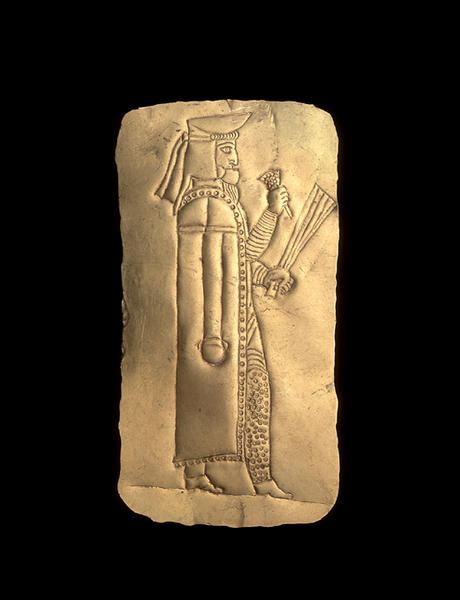 An offering plaque with an image of a Zoroastrian priest, 5th C BCE. The MIHO collection “His arms are bent at the elbow as he holds flowers punched with small circles on in his right hand and six barsoms in his left hand held slightly lower. The priest is shown wearing a soft felt hat or Kyrbasia, and ribbons hang down from the back of the hat. Beneath the Kyrbasia, his face is shown covered with mask at his mouth, a pose assumed so that he will not contaminate the fires of Zoroaster. His dress is a kandys, or a long coat with long, thin sleeves, over a short, belted tunic. In line with one tradition, the kandys is placed over the shoulders with the sleeves hanging loosely down (only in the presence of the king are the arms said to have been thrust through the sleeves). This garment has a vertical border which is pressed with small circular stamped motifs. These represent decorative plaques which would have been sewn onto the garment. The left leg that is extended forward is also covered with these small circular stamped motifs, and a dot has been incised in the middle of each circle. He wears short boots with rounded toes.” |



Gold figurines of the Zoroastrian priests, dated to the 6th C BCE. The Miho collection
“The figures are all shown wearing knee-length tunics and bashlik caps on their heads with the front of the caps leaning to the left. They are wearing masks with mouth and nose areas that protrude to the front and sides. Each figure is belted with the ends of the belts hanging to the front of each figure. The legs from knees down are decorated with circular patterns which were pressed or incised into the gold. The long sleeves of the tunics reach the figures’ wrists, and the fabric’s wrinkles are clearly depicted on the arms.”



